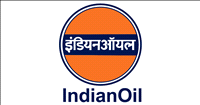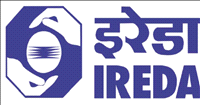Private players ‘insure’ LIC’s business
By Venkatachari Jagannathan | 10 Jul 2001
Every morning when Mr. A. Ramamurthy, managing director, Life Insurance Corporation of India (LIC), looks at advertisements of private life insurers in newspapers, he chuckles. The reason? The intensive media campaign launched by LIC's rivals is actually bringing in big business to LIC.
Mr. Ramamurthy silently thanks the competition for creating awareness amongst public about life insurance, which is now helping sell the corporation's hitherto not well promoted products.
The figures speak for themselves. LIC's first year/fresh premium income has shot up by 25 per cent during the first two months of this fiscal. The corporation's single premium policy registered a growth of 800 per cent. The other policy that contributed for the premium growth is 'Bima Nivesh' that provides an assured return of 10.5 per cent at a time when interest rates travel southwards.
Last year, LIC's first year premium growth was an envious 65 per cent, amounting to Rs.6,262.39 crore. Overall, LIC closed fiscal 2000-2001 with a total income of Rs. 57,000 crore of which Rs.35,000 crore is accounted by premium income. Both these figures are much higher than the projected ones. The other major revenue streams are investment income (Rs.18,000
crore), profit on sale of investments (Rs.1,100 crore) and rent (Rs. 120 crore) says Mr. Ramamurthy.
It is the last stream that causes heartburn to Ramamurthy. Though owning several prime properties in Mumbai and other major cities, LIC's rental income is really a pittance. The corporation's latest drive to increase the rent is being opposed by vested interests occupying such properties. "We have drafted a new estate policy which is under our Board's consideration," is all that Mr. Ramamurthy volunteers.
While LIC's total assets stood at Rs.194,000 crore at the end of March 2001, up from Rs.160,935 crore, its Life Fund grew to Rs.185,000 crore, from the Rs.154,043 crore clocked the previous year. "Our valuation surplus for 1999-2000 stood at Rs. 6,500 crore while the valuation process for the 2000-2001 is on. Generally, we experience an average growth of 20 per cent per annum (p.a)," adds Mr. Ramamurthy.
But too much reliance on single premium policy is not good for health of any life insurer and more so in the case of new companies.
Expressing satisfaction about the LIC's business mix – 80 per cent of the premium income is derived from endowment and money back policies – Mr. R. Ramakrishnan, a consulting actuary, warns, "The margin in single premium policy is very low and not profitable. While it is fine for LIC to transact this business, the same cannot be said so in the case of new private players."
Single premium policies will help new players to show premium income and document volumes. But the pit fall is the cash outgo when the policy is surrendered after the third year. "For any life insurer, it is only the endowment and money-back policies that will lend the needed long-term financial support," opines Mr. Ramakrishnan.
Explaining LIC's strong points, Mr. T.K. Banerjee, executive director (marketing), says, "Price as well as returns-wise, our products beat competition by a wide margin." While LIC provides a return of 7 per cent at an average on all its policies, private life insurers seem to guarantee a paltry 3.5 per cent.
Though the above is true, with the yield on investments coming down, LIC is reportedly considering a hike in premium rates for some of its policies. At a time when life expectancy has increased substantially, there is a complaint that LIC hasn't revised its mortality table and reduced the premium accordingly.
The corporation's contention is that its investment yield is on the downslide while its returns to policyholders are going northwards. Last fiscal, the investment yield was 11.6 per cent as against 11.7 per cent the previous year. What is comfortable to note is that the yield is far higher than what will be earned by new insurers as the corporation invested its money during the
high-return periods.
Going by LIC's performance and its plans, it is sure that competition has to be on its foot. The public sector giant is gearing up further to make life miserable for the private sector.
However, Mr Ramamurthy says that LIC is not increasing its bonus rates to kill competition. "Increasing them will actually hurt the corporation as it will have is impact on the profitability," says he.
On the other hand, the corporation plans go on an offensive with its Rs. 100- crore media blitz this year.
This sudden push is seen as LIC's response to the entry of State Bank of India (partnering with Cardiff, France) into the life insurance sector. Interestingly, State Bank's insurance venture actually pegs its promotion on its pedigree - government owned parent- and the safety of policyholders' money.
Besides, on the product side, LIC intends to frighten competition by packaging attractive riders with all its policies. Currently, all these riders are available as standalone insurance policies.
"We will soon be introducing critical illness rider on endowment policy," discloses Mr. Ramamurthy. This rider is expected to be a general one for all LIC policies. Another new product on the anvil is Term Assurance with extra accident benefits.
The provision of tax incentives in pension products like 'Jeevan Suraksha' has attracted attention of investors. In addition to providing a variety of options like risk cover during deferment period etc., provision of commutation at the time of vesting and provision for family pension are the reasons cited for pension products being favoured by public apart from the tax breaks it offers.
"In the falling interest rate regime, the best option is to introduce Unit Linked Pension Policies where 90 per cent of the income earned is distributed by way of pension," says he. According to him, pension policies will be attractive if IRDA considers favourably differential premium rates for sales over the counter, Internet sales, pension from the maturity proceeds of life insurance policies.
As these sales don't involve any intermediary, the benefit accrued to the life insurer can be passed on to the customer with a marginal reduction in premium.
Further, with pension policies and life insurance policies running over a span of time, it is essential that the Reserve Bank of India comes out with long- term government securities, he adds.
Life Insurance Corporation of India, the most networked organisation in the country, next only to the Indian Railways, has budgeted Rs. 80 crore investment on IT this fiscal.
As per the plans, LIC will network the balance two-third of its offices by this year-end. Says Mr. Banerjee, "Today eight big cities are connected by wide area network (WAN). This number will be increased to 41 this year-end." In other words, around 750 divisional offices will be networked soon.
Part of the IT investment is towards web initiatives, initially to pay premium using the net. The premier life insurer is tying up with five players - Billjunction.com, timesofmoney.com and three banks, HDFC, ICICI and Bank of Punjab, to act as its payment gateway. According to Mr. Ramamurthy, the Corporation Bank will later join the payment gateway list.
It may be recalled that LIC took 27 per cent stake in Corporation Bank for a sum that is being worked out. While LIC will be tapping the bank's 43 lakh depositor base for business, Corporation Bank will take care of our cash management services, says Mr. Ramamurthy.













.jpg)
















